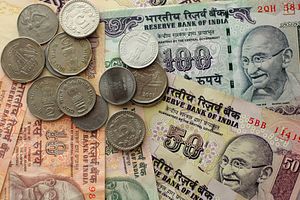The Reserve Bank of India (RBI) is set to release its fifth bi-monthly monetary policy statement on December 1. The RBI has already cut the repo rate by a whopping 125 basis points this year, with the most significant cut of 50 basis points from 7.25 percent to 6.75 percent on September 29. Yet the path ahead for the RBI’s monetary policy is tricky, given domestic regional disparities and global macroeconomic uncertainties.
Resurgence of Inflation
Since the previous rate cut, the consumer price index (CPI) has spiked in India. Back in September CPI inflation was at just 4.41 percent; however, according to the latest data released by the Indian Ministry of Statistics & Programme Implementation (MOSPI) a provisional inflation figure of 5.00 percent in October was reported. This increase in inflation is hardly a surprise, as in the fourth bi-monthly policy statement the RBI had already indicated that it expects inflation to increase from September onwards due to the reversal of favorable base effects. The RBI also explicitly revealed in the same statement that it expected CPI inflation to reach 5.8 percent by January 2016. This shows that inflation is rising within the RBI’s expectations. Given this tide of inflation, the RBI is then likely to wait for this wave to settle down before any further monetary easing.
The Indian economy has also benefited significantly from the fall in global commodity prices, which brought inflation down in India as it has elsewhere, thus enabling the RBI to cut rates. This fall in commodity prices coincided with the appointment of Raghuram Rajan as RBI governor, and was a factor in his war against inflation. Still, a reversal in commodity prices is beyond Rajan’s control and is a risk that would have to be managed by monetary policy.
Federal Reserve
On December 16, U.S. Federal Reserve Chairwoman Janet Yellen will be announcing the U.S. Federal Open Market Committee (FOMC) monetary policy decision, with the possibility of a rate hike. This move may have repercussions for India and other emerging markets, as a rise in the U.S. interest rate will encourage investment in U.S. treasury bonds and U.S. dollar-denominated fixed income securities. The accompanying withdrawal of investment from emerging market economies can be viewed as akin to drawing blood from a body. The uncertainty looming over a Fed rate hike suggests that the RBI may adopt a wait and see approach before making any further rate cuts. A hike in U.S. interest rates accompanied by a cut in the RBI repo rate may cause a sharp decline of the Indian rupee, which recently hit a 2-year low of 66.90. Indeed, the rupee could experience severe volatility and may hit new lows without central bank intervention.
My view is thus that the current policy repo rate of 6.75 percent as well as the cash reserve ratio (CRR) of 4.00 percent remains appropriate for India given the current macroeconomic conditions. On December 1, the RBI should and will keep rates unchanged.

































